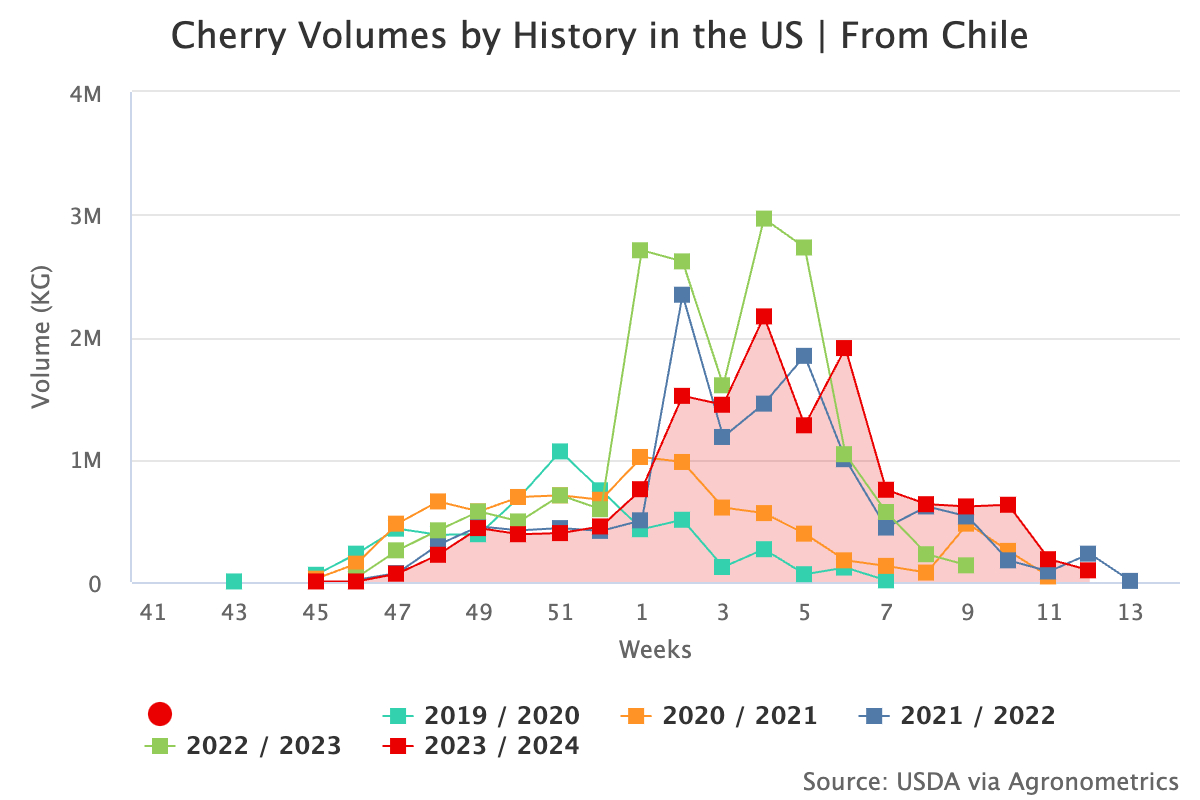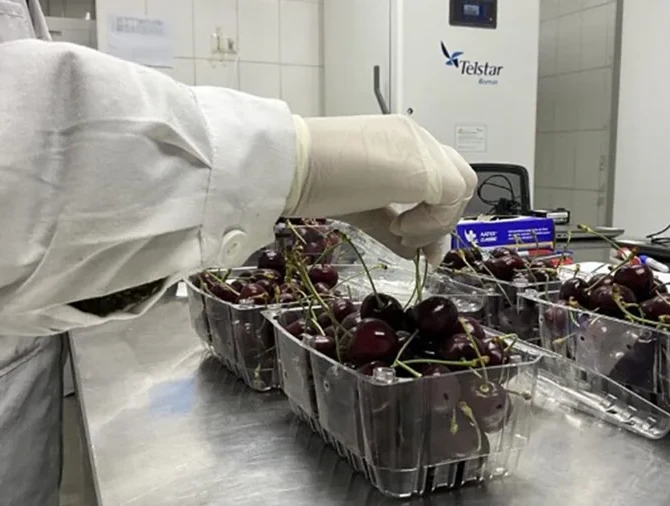The 2025 global cherry season is marked by stark contrasts among producing countries, with alternating record harvests, drastic declines, high quality, and climate-related challenges.
This heterogeneous picture reflects the dynamic and interconnected evolution of the sector.
United Kingdom and Italy
The cherry season in the United Kingdom began earlier than expected due to favorable weather conditions and the introduction of new varieties such as the Stoppel Prim series and Folfer.
The harvest, concentrated in a 4–5 week window compared to the traditional 6, delivered high-quality fruit, with total output estimated at 7,850 tons.
60% of production comes from Southeast England, followed by the West Midlands (30%) and Scotland (10%).
About 20% of cherries are sold directly on farms, while 70% go to large-scale retail distribution.
In Emilia-Romagna, cherries reached large sizes (over 28 mm), and farmgate prices ranged between €6 and €12/kg.
The market was buoyed by limited supply from the South, Spain, and Turkey.
In Apulia, despite a 50% drop in volumes due to bad weather, revenues remained stable thanks to excellent quality.
Top prices peaked at €9/kg, now settling around €4–4.50/kg.
In Campania, the Bracigliano area had a positive season, with very sweet cherries (Brix above 25).
According to YouGov, 35% of Italian households purchased cherries in the year ending April 2025, up from the previous year.
Spain, Germany, and France
Mild and rainy weather delayed the start of Spain’s season, mainly affecting Lleida, Aragon, and Jerte.
Reduced availability and Turkey’s production collapse kept demand and prices high, although early summer heat raised concerns about quality retention.
The export protocol to China was approved, but cautiously, due to strict cold treatment requirements.
In Germany, domestic production gained ground amid the rising prices of cherries from Greece, Turkey, and Italy.
Major growing areas (Lake Constance, Altes Land, Rheinhessen) reported stable volumes and excellent quality, with particularly strong aromas.
Late varieties like Final 12.1 will extend the season until mid-July.
Cherry production in France reached 80% of orchard potential, totaling over 33,000 tons, +5% compared to 2024 and +12% above the five-year average.
Favorable weather conditions are supporting sales and consumption, with good prospects through late July.
Austria, Netherlands, and Greece
The Austrian market relies heavily on imports from Turkey, Spain, and Italy.
In Styria, local growers face increasing challenges from late frosts and heavy rainfall.
To maintain quality, growers increasingly use hail nets and frost protection.
The 2025 Dutch harvest stands out for its sweetness and quality, although the fruits are slightly smaller.
Low imports from Greece and Turkey accelerated sales of local cherries, with prices between €6 and €7/kg.
Although production in Greece was forecast to rise by 34%, over 70% was lost due to bad weather.
Retail prices soared, with increases exceeding 400%.
Switzerland, Americas, and South Africa
Switzerland expects 2,500 tons of good-quality cherries, thanks to rainfall after weeks of sunshine.
Availability will last through late July due to varietal diversification.
In the USA and Canada, production is rising, with a strong start in California and the Northwest.
However, import tariffs are limiting exports, and retail prices are under pressure.
Canada shows signs of recovery after the 2024 frosts, although early fruits are small.
South Africa’s production reached 3,086 tons (+9%), with 60% exported to the UK.
Thanks to low-chill varieties, the northern regions now produce one-third of the harvest.
A strong harvest is also forecast for the coming year.
Chile, Argentina, China, and Turkey
The boom in Chilean exports (+50%) triggered a price collapse (from $30 to under $20 per box) (approx. €28 to under €19 per box).
Heavy reliance on China (90% of exports) highlighted logistical vulnerabilities.
The sector now aims to diversify toward the USA and Europe.
With over 6,000 tons exported, Argentina stands out for its southern certified cherries, benefiting from excellent growing conditions.
Volumes remain limited, but the reputation is solid.
US cherries arrived in early June with prices 15–20% lower, but demand is weak.
Consumers complained about low sweetness levels in some batches.
The country is facing one of the worst cherry seasons in recent years.
With 70–80% of production affected, exports are limited.
The few available batches target very high prices, as exporters wait for the best offers.
Source: freshplaza.com
Image source: Wikipedia
Cherry Times – All rights reserved












